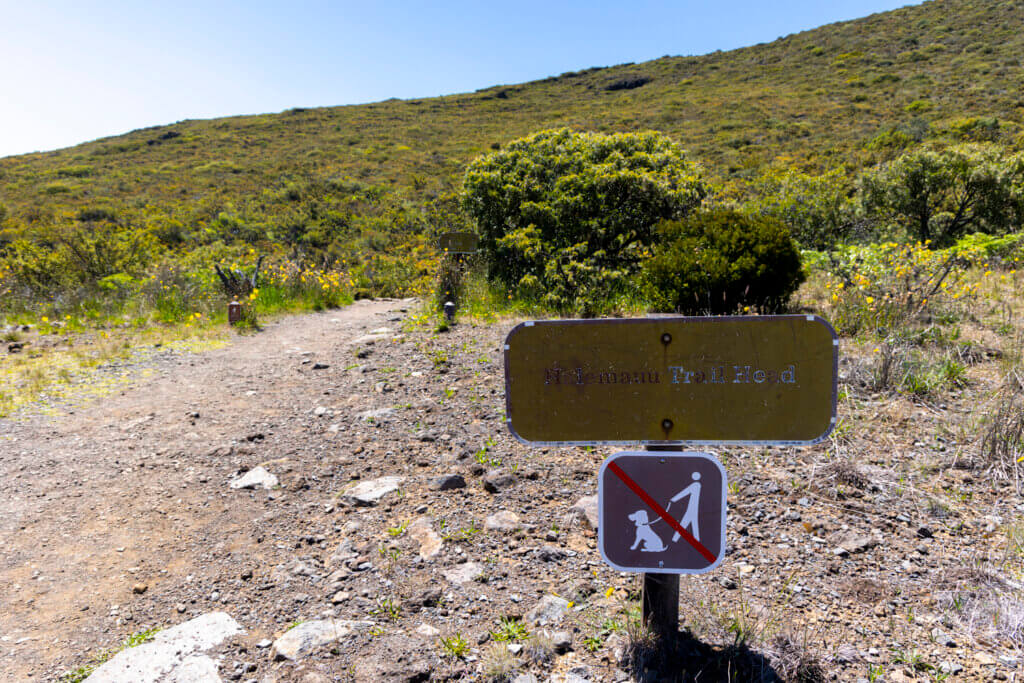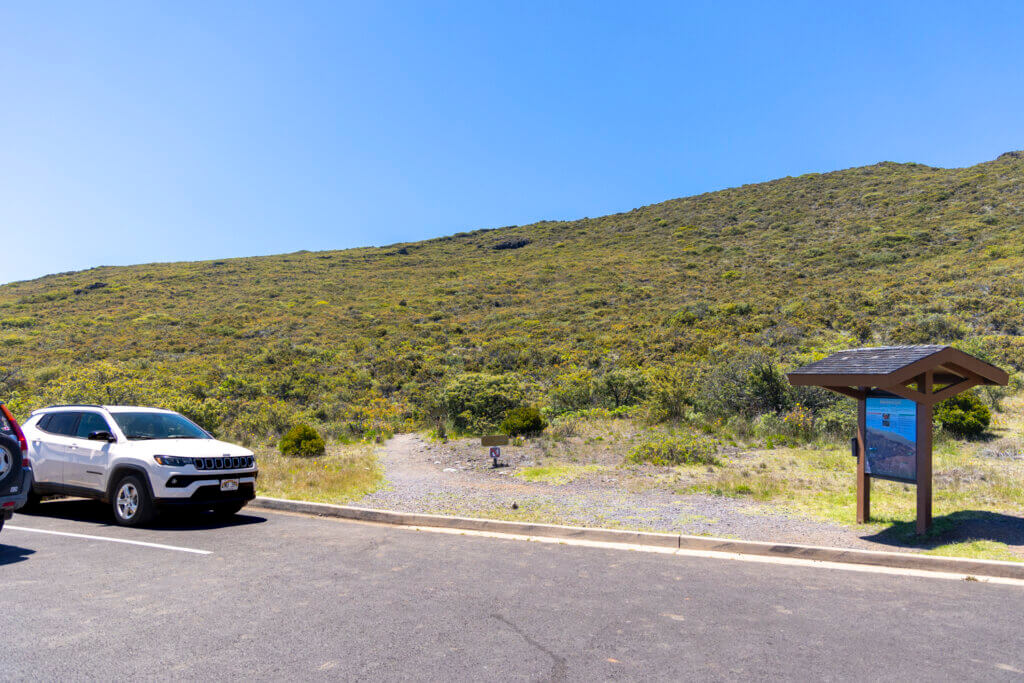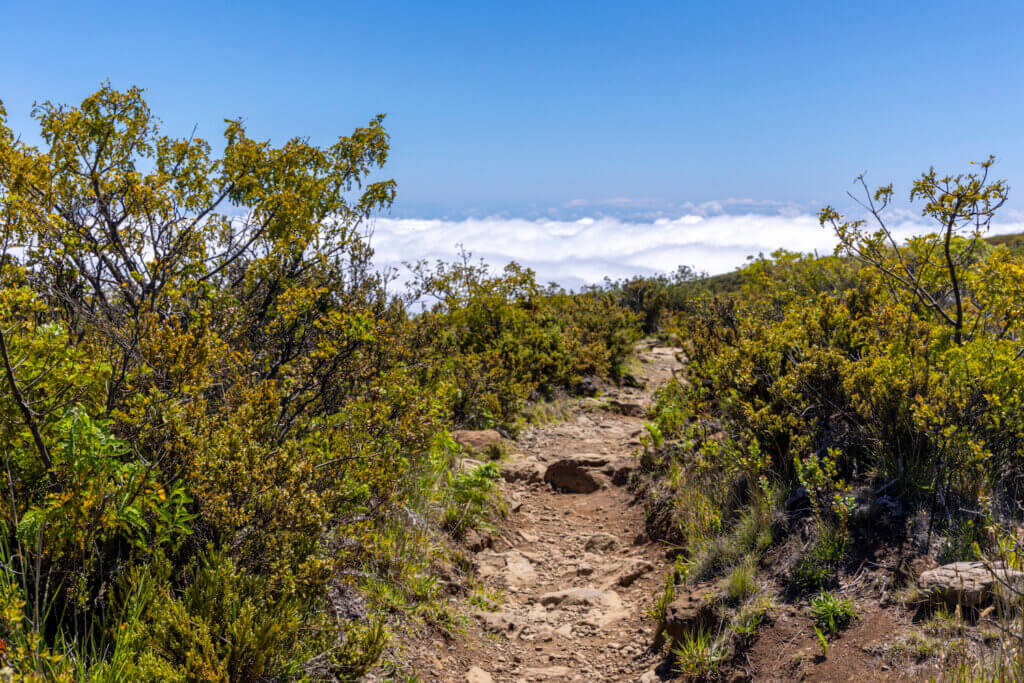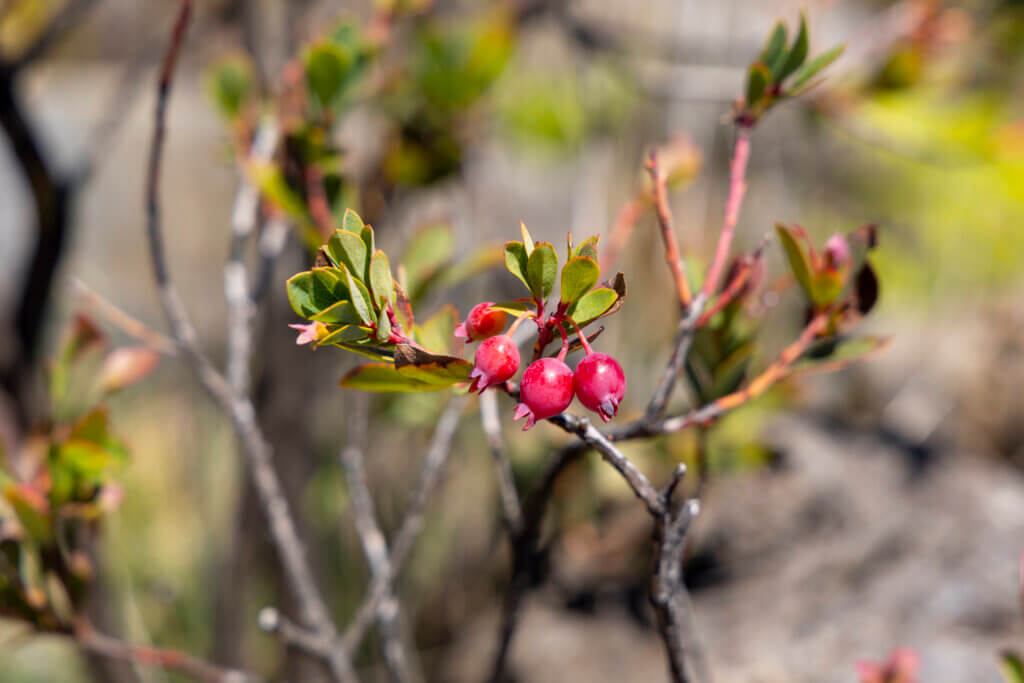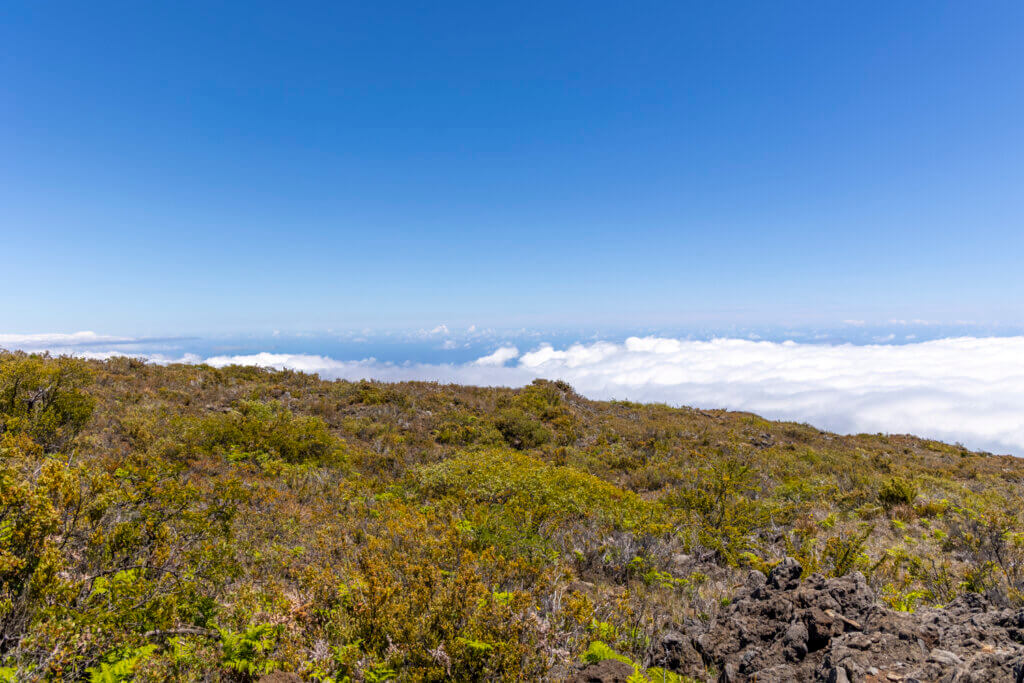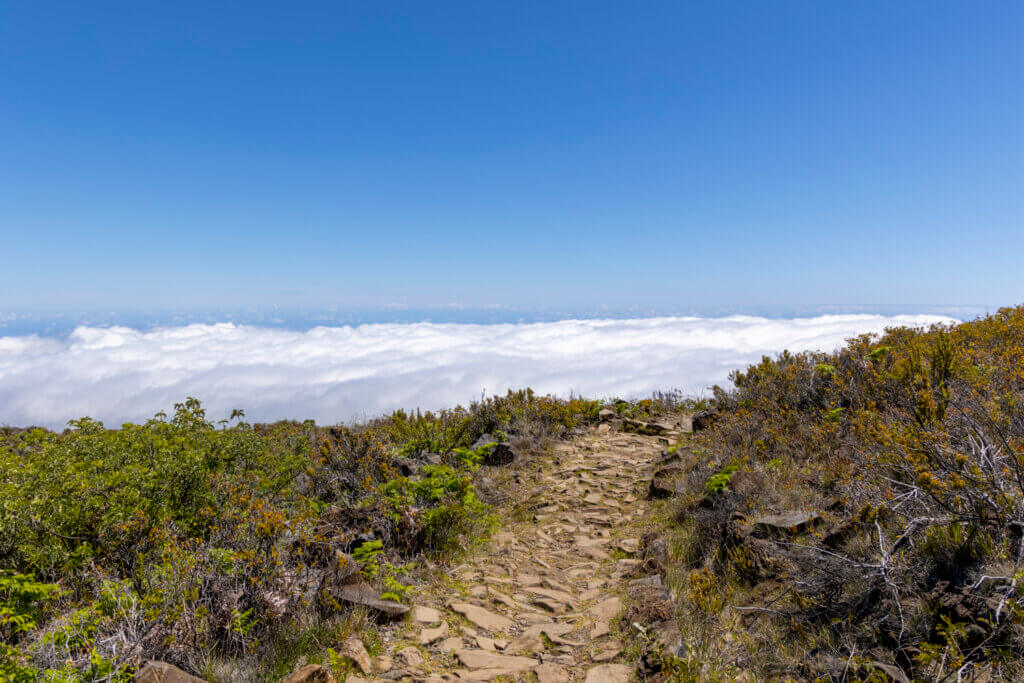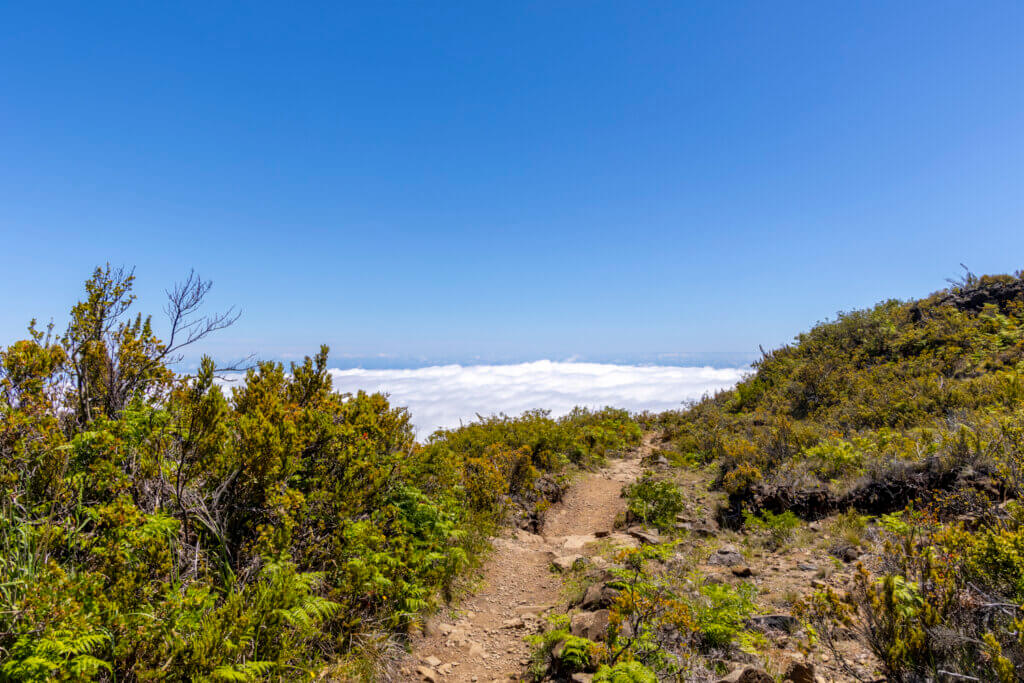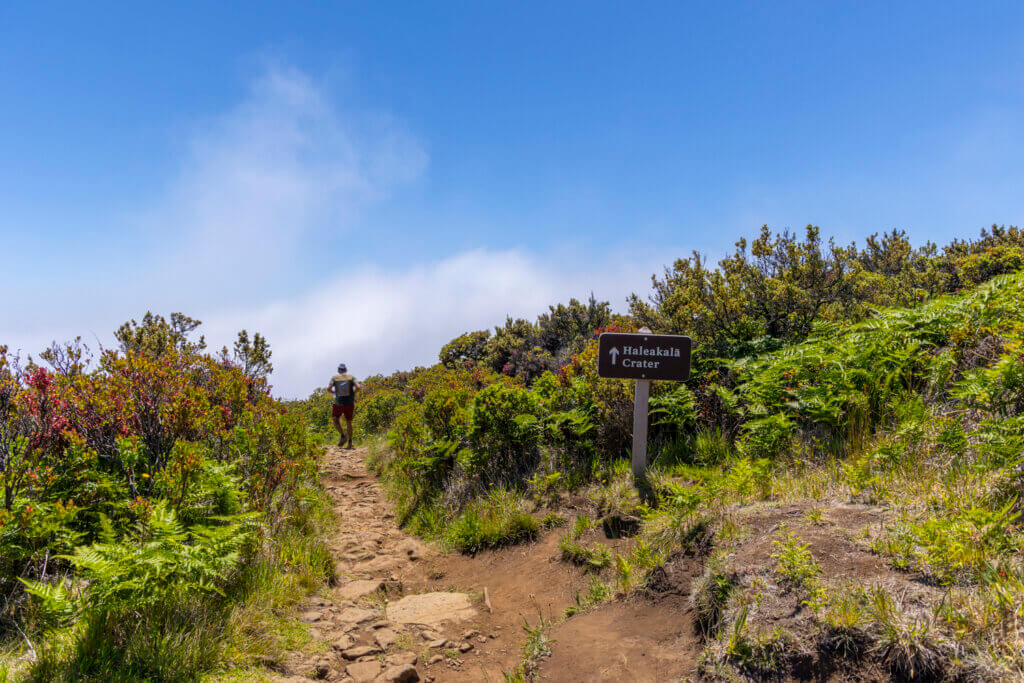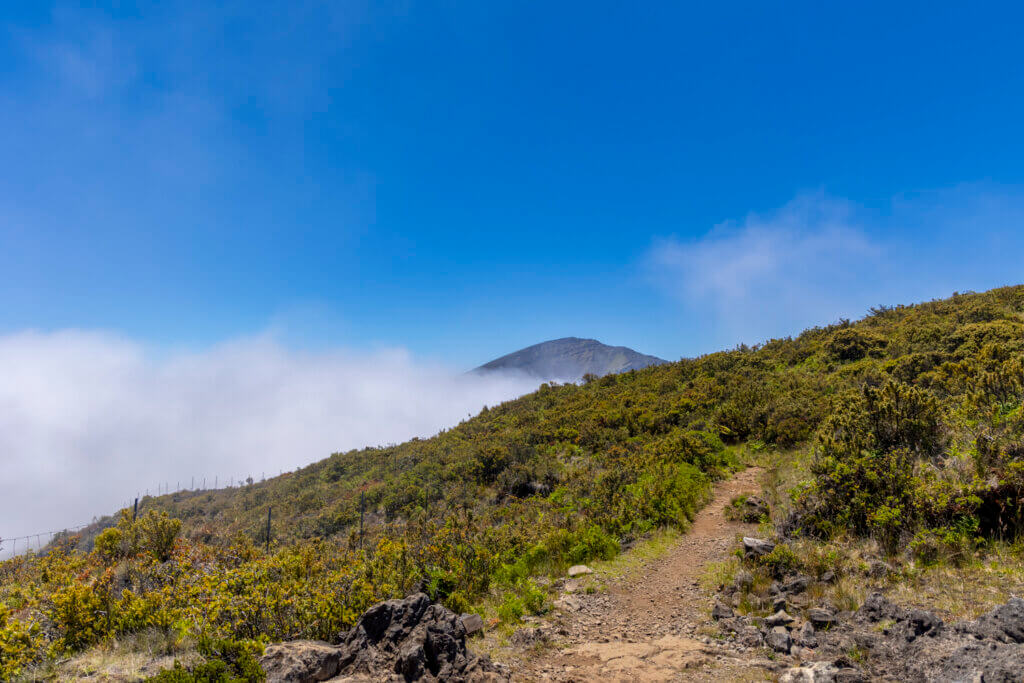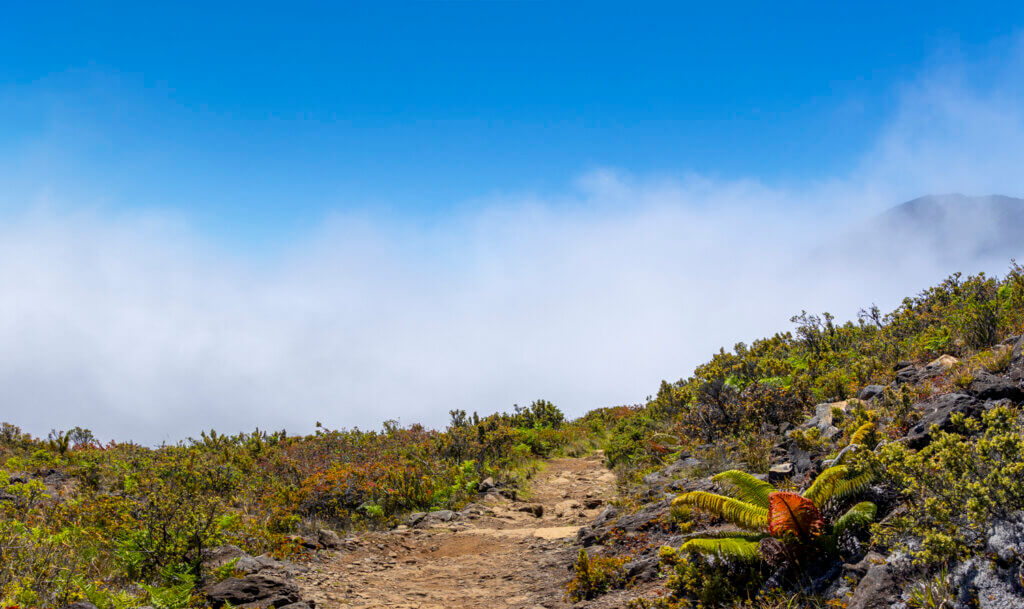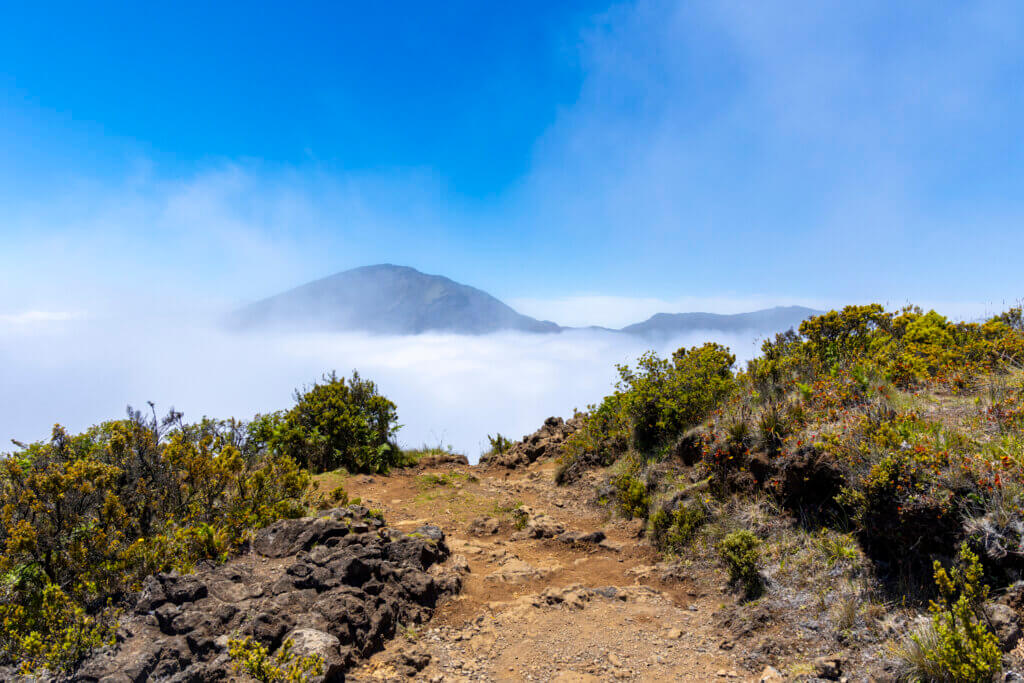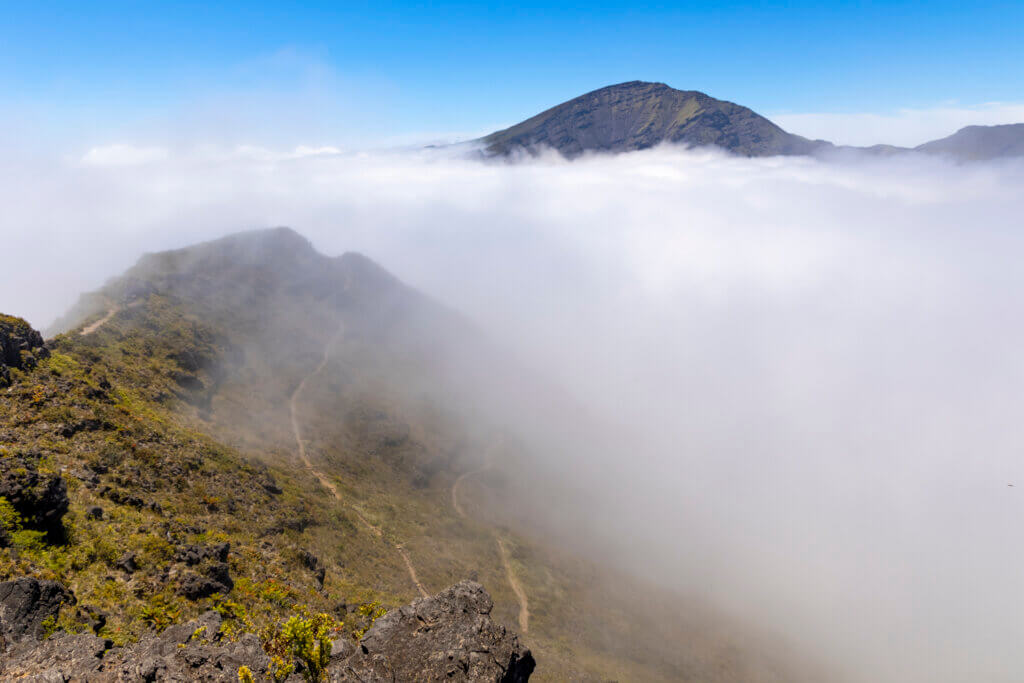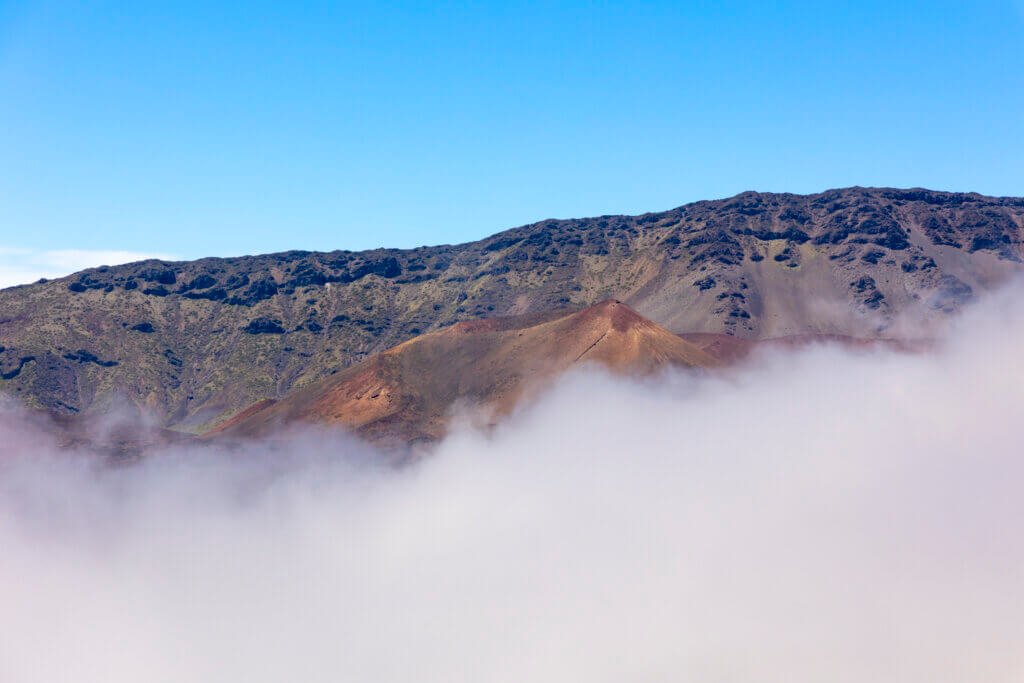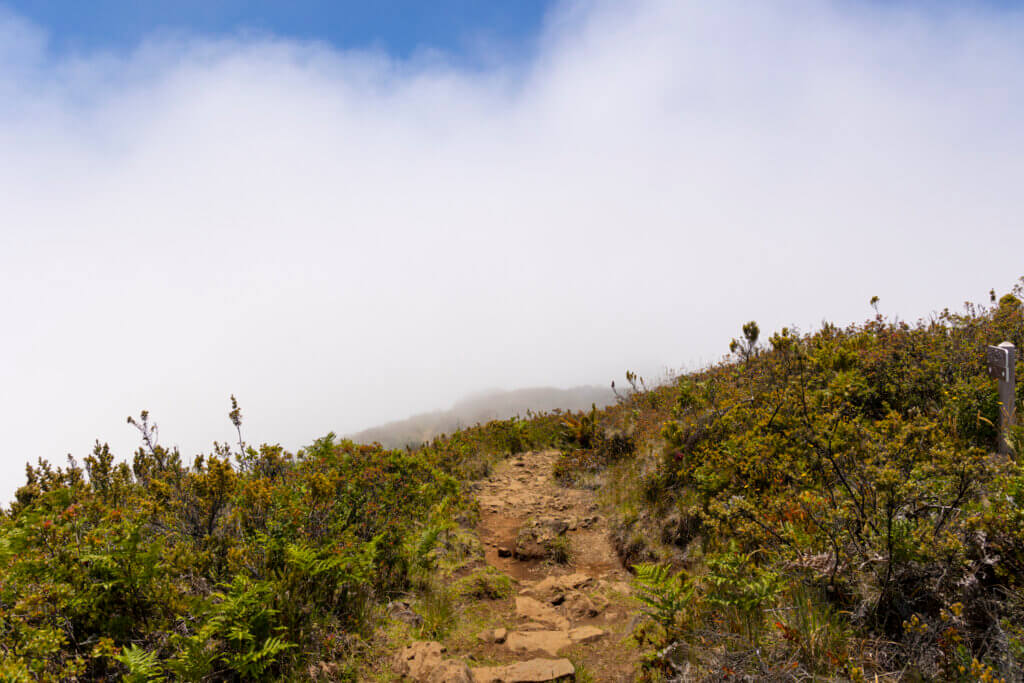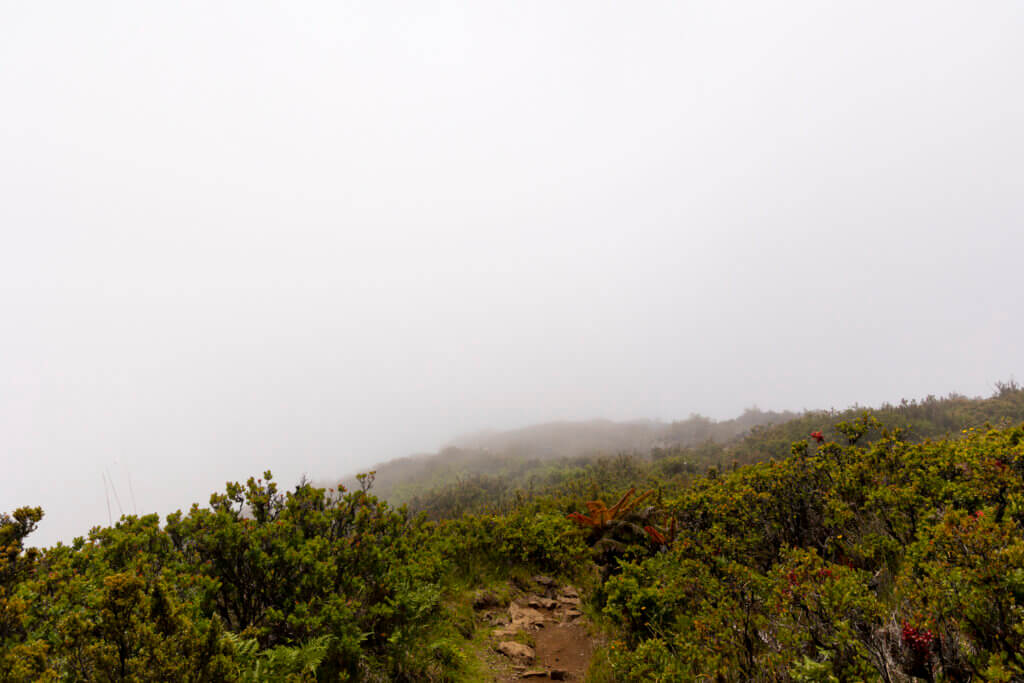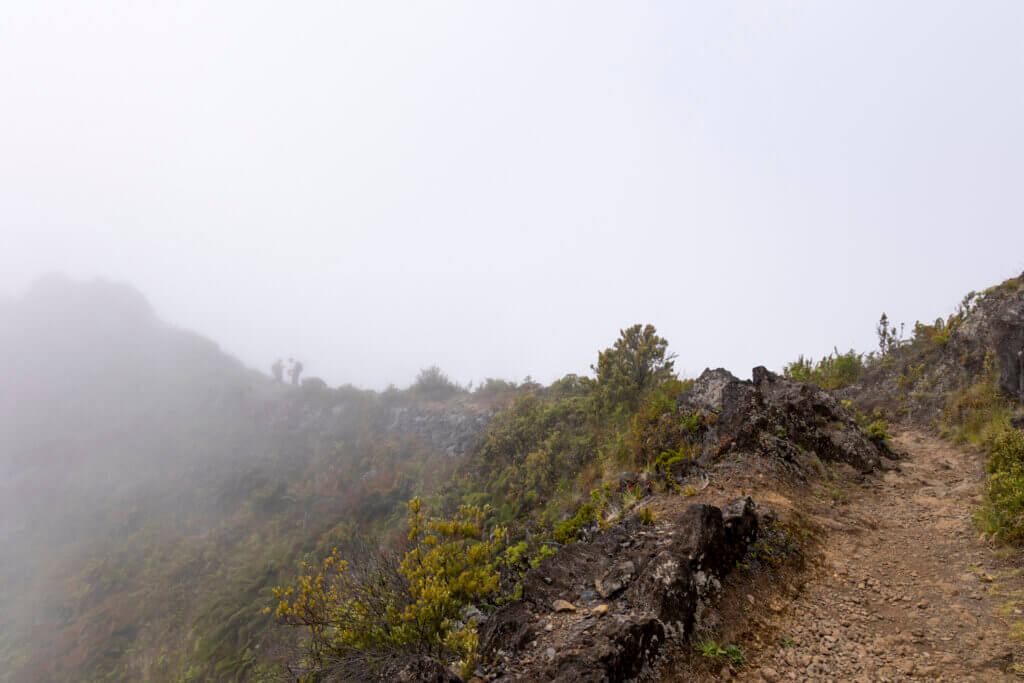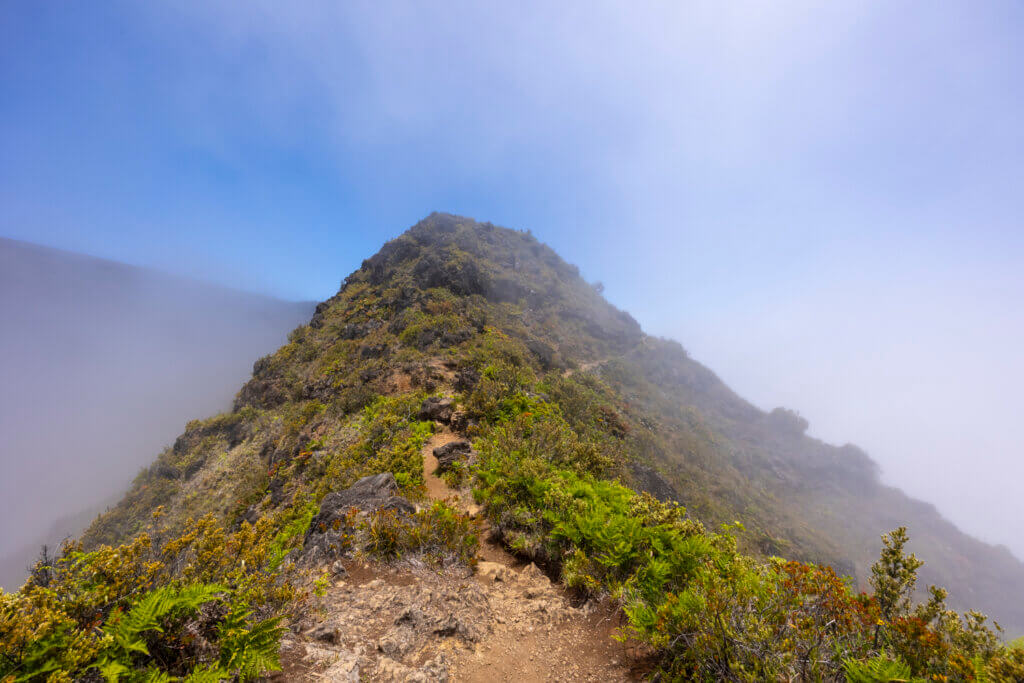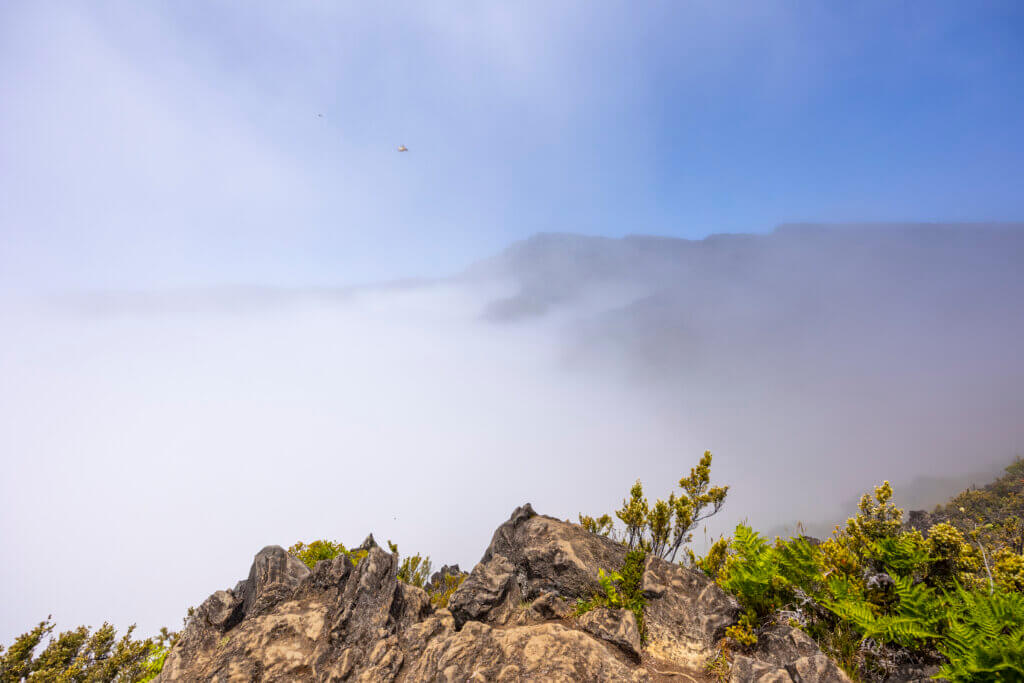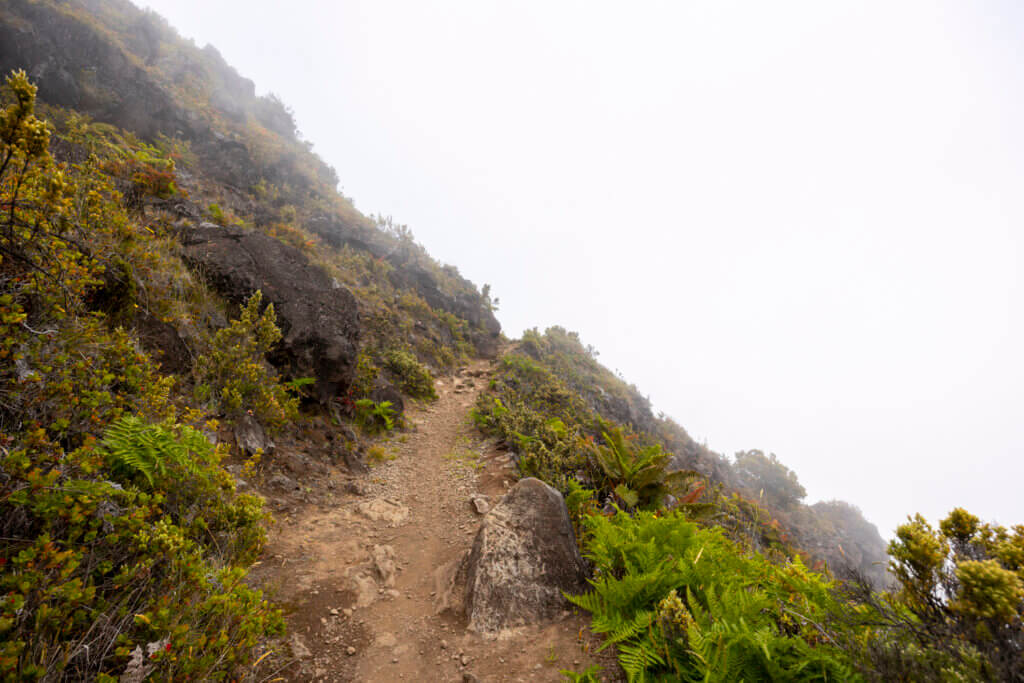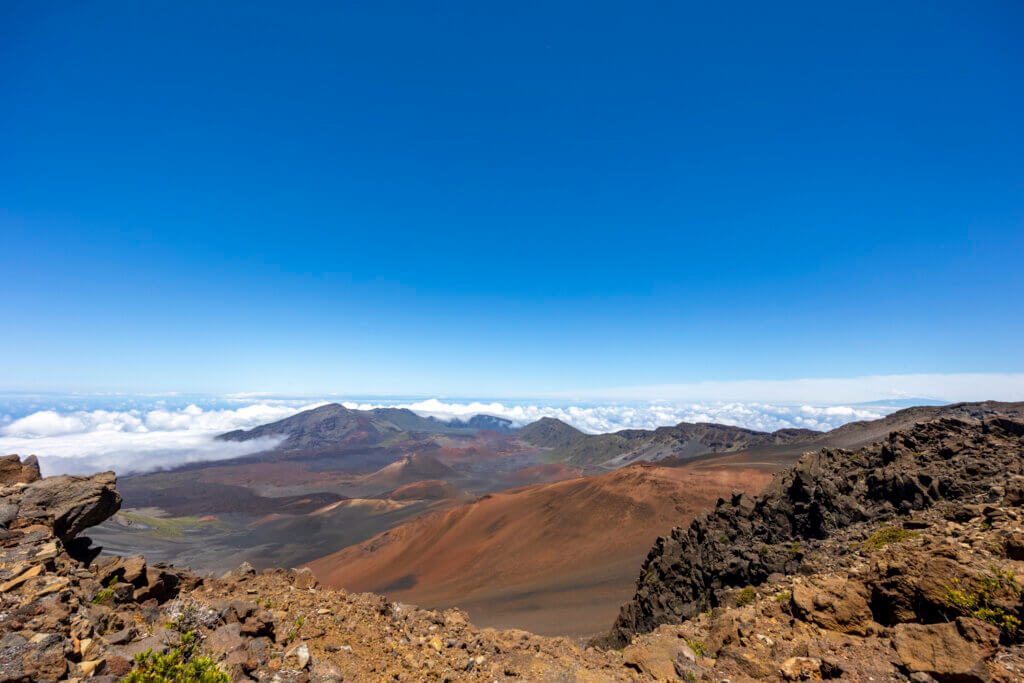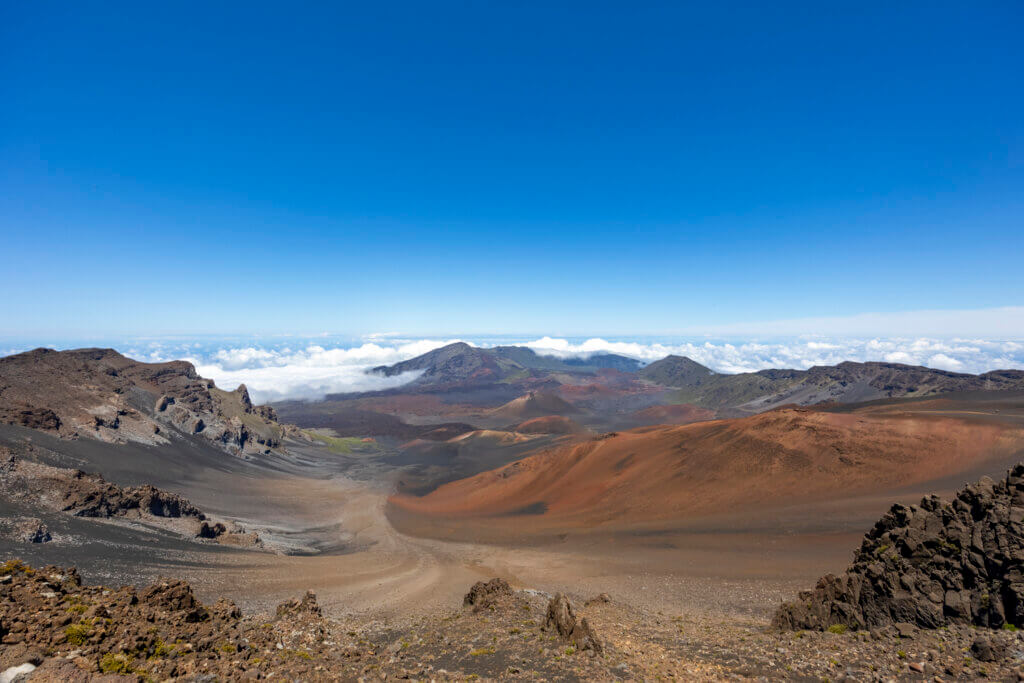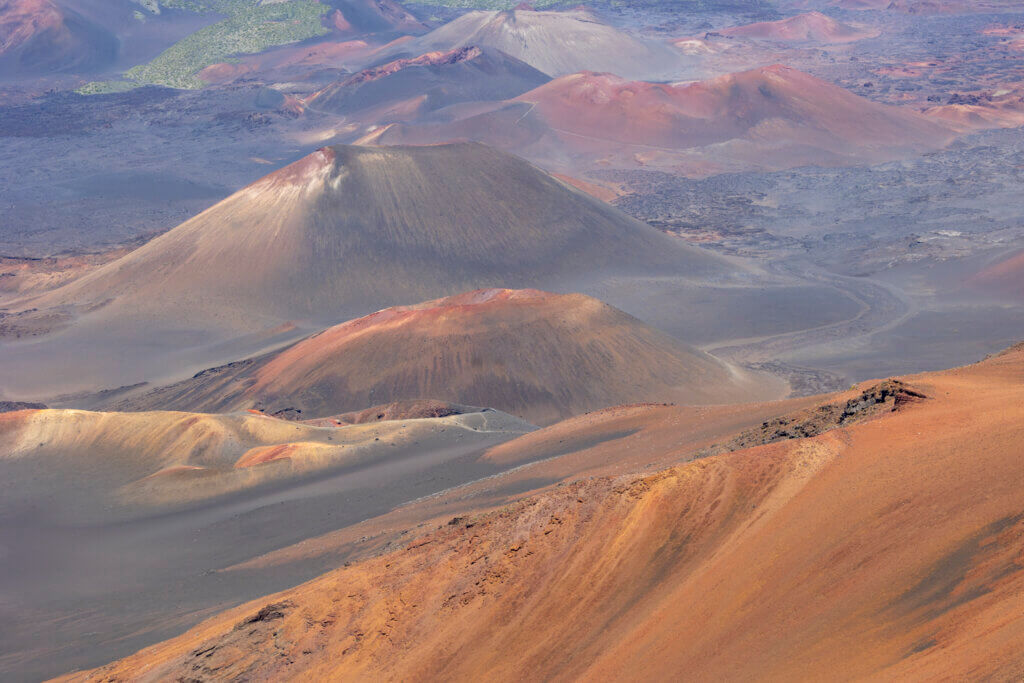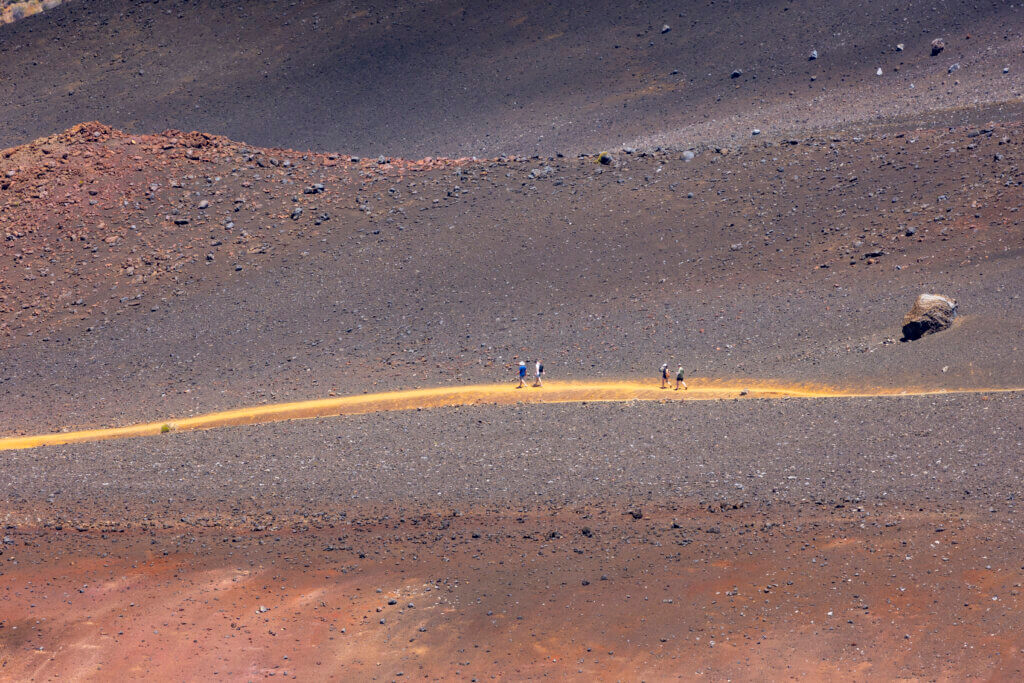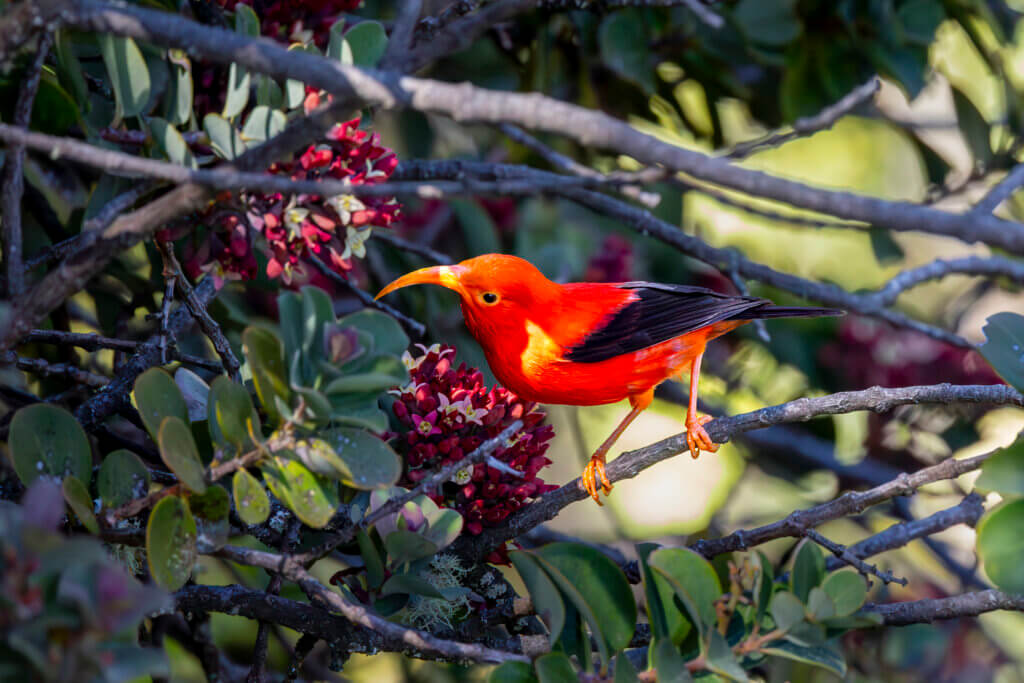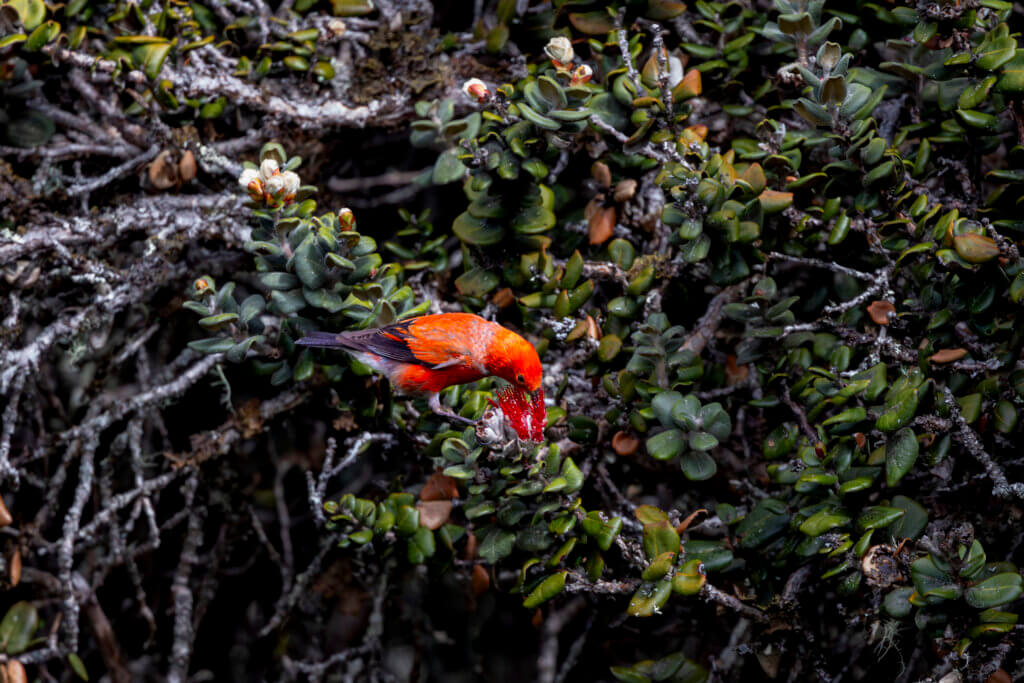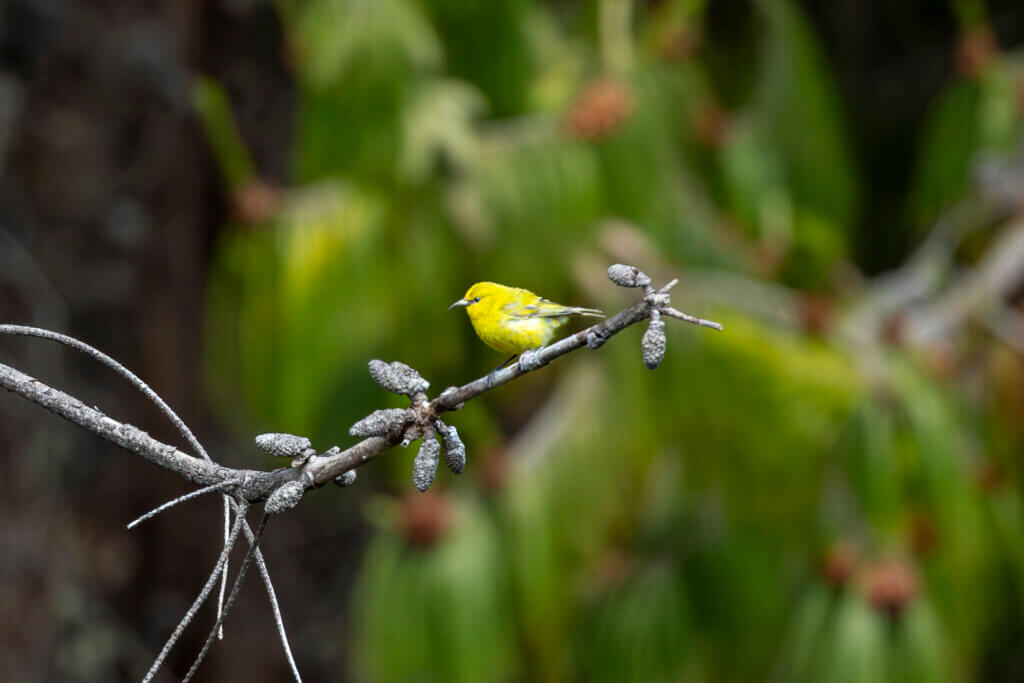Last updated on January 3rd, 2025 at 12:33 am
For our one full day on Maui, we decided to do a day of hiking in Haleakalā National Park. Ok, well, not quite literally a day. But we did spend about three hours on one trail, did a little sightseeing around the park afterward, and ended with a little birding, which also required a small amount of hiking again.
When I originally planned this trip for September 2023, my motivation for doing so was to get back to Haleakalā National Park to do some birding with my newer Canon RF 100-500 f/4.5-7.1 L lens. This new lens gave me two-and-a-half times more reach than the lens I used the first and only other time I went birding in the park. This was important to me since, last time, I got some good pictures of the endemic ‘i’iwi, though I didn’t have enough reach to get great shots, which is something I wanted to fix – especially after my proving session at Hawai’i Volcanoes National Park earlier in 2023.
Of course, I didn’t want to make this all about me. So, i made it a point to find an activity Mrs. Island Miler would enjoy, too. That meant a day of hiking in Haleakalā National Park. That’s easier said than done, as interesting and easy trails are a little harder to come by here than they are at Volcanoes. However, I found one that sounds like it would fit the bill, so we gave it a shot.
A Day of Hiking in Haleakalā National Park
For our day of hiking in Haleakalā National Park, I chose the Halemau’u Trail. This is actually a really long trail that extends down and across the summit’s erosional crater, where it eventually meets up with the Keonehe’ehe’e (Sliding Sands) Trail. A one-way hike across the crater on these two trails is a little over 11 miles, which is pretty rough when you account for the elevation change. Naturally, we wouldn’t be doing that. I’m out of shape, so there’s no way I’d survive that. Instead, we did the “Rainbow Bridge” portion, which terminates just before Halemau’u Trail begins to switch back down into the crater.
The trailhead for Halemau’u Trail is about a third of the way from the visitor’s center to the summit. For us, that meant a 1.5-hour drive from the Hyatt Regency Maui to get our day of hiking in Haleakalā National Park started. We didn’t wake up too early, so we ended up getting to the trailhead around 10:30 am. By then, the small parking lot was already mostly full. However, we lucked out and got there just as someone else was leaving. By the time we finished, things were even worse, with several people sitting in their cars waiting for a stall to open.
It’s also worth noting that the trailhead’s location is at the 8,000-ft level, making this a sub-alpine hike. That means the weather can change quite a bit and do so suddenly. It also means that the concentration of atmospheric oxygen is 15.4% versus 20.9% at sea level, which means you may get winded easily up here, especially if you’re not fit (like me). The important thing to know before setting out on a hike like this is to know your limits and to take things slow. DO NOT over-exert yourself, lest you want to end your day of hiking in Haleakalā National Park being carried out by rangers.
Before we get into our day of hiking in Haleakalā National Park, it’s worth noting that the National Park Service says this is a 2.2-mile roundtrip hike with a 400ft elevation change. I don’t want to call the liars, but my Apple Fitness app says I did 2.53 miles and saw a 473 ft elevation gain. Mind you, I forgot to start my hike until we were about 5 minutes into it.
At any rate, the first half of the hike is the easy part, as it’s all downhill. What’s not so easy is the very uneven surface that makes up a good chunk of the first half of the trail.
Being that this is a sub-alpine region of Haleakalā, so you aren’t going to get much in the way of shade. Most of the vegetation you’ll see along the way is tall shrubbery. If you keep your eyes open, you’ll also see A LOT of ‘ōhelo ‘ai. There wasn’t a lot of fruit during our visit, but I could pick out these shrubs by their leaves, and they were plentiful! Remember, it is legal to pick a quart per person per day. However, if you do, remember to make an offering to the volcano goddess, Pele, and to leave berries on the shrubs for the Nēnē to feed on.
As you can see in the earlier picture, the first part of the hike is above the cloud layer. This made for rather spectacular views, but also means you’re really exposed. I got pretty badly burned, despite wearing sunscreen. Even worse, my scalp got burned, even though didn’t style my hair that day.
As gorgeous as the views are, always be mindful of where you’re placing your feet. Things aren’t so bad when the trail is primarily dirt, but certain sections are all uneven rock, such as in the photo below. I fared better than Mrs. Island Miler, since she was wearing cross trainers and I was wearing hiking shoes, but, regardless of what you wear, one wrong step and you can sprain your ankle or worse. Be careful! You don’t want to ruin your day of hiking in Haleakalā National Park (and the rest of your vacation) with an injury.
As we continued to descend down the trail, the could got closer and closer. I also noticed Hawaiian honeycreepers would occasionally go whizzing past us, especially in the lower half of the hike. That shouldn’t be a surprise, though, as Supply Trail connects Hosmer’s Grove and Halemau’u Trail, while the birds also live in certain portions of the crater interior, too.
Another thing to note is the Halemau’u Trail is also used by horse tours. So, aside from being mindful of where you step for your safety, you’ll also want to watch for horse poop. We encountered a nice pile of it shortly before we reached the sign shown below.
Looking back at these photos, it’s really striking to see how the foliage change as you descend. As you can see in the above photo, things got quite a bit more lush as we got closer to the cloud layer. We also began seeing more ferns as opposed to grasses. Not long after the above sign is when you start seeing the other side of the crater rim, as pictured below.
To me, this is when the hike really starts getting interesting. You’re now hiking amongst the clouds rather than above them. Unfortunately, the clouds also meant that our view of the crater itself was mostly blocked. That’s just the nature of a day of hiking in Haleakalā National Park. Sometimes you get lucky, and other times you don’t. Either way, there is a unique beauty to behold, which makes either experience worthwhile, at least in my opinion.
Your time at this altitude doesn’t last long, as the trail continues its descent into the clouds. By this point, we were actually looking forward to being in the clouds. Not only do they provide for an ethereal view of the world around you, but by now, we were quite hot and tired, and in need of some relief from the relentless high-altitude sun.
Alas, we weren’t quite there yet, but we did stop of at a look out into the crater. As I mentioned earlier, the presence of the clouds meant that we wouldn’t be able to see into the crater during this day of hiking in Haleakalā National Park. Instead, we saw the tops of the other side of the crater peaking above the clouds, while in the foreground, we saw Halemau’u Trail vanish into the cloud layer.
A lot of people were turning around at this point, but we hand’t reached the 1.1-mile mark, which is how far the National Park Service says this trail is, so we pressed on. The switchbacks pictured above are actually quite a ways away from this area, and we didn’t set foot on them during this day of hiking in Haleakalā National Park. However, the portion of the trail past the above lookout was a set of switchbacks, which hastened our descent further.
As you can see above, we very quickly entered the cloud layer and began to cool off. Unfortunately, since clouds do move, we didn’t have consistent coverage during this phase of the hike – at least, not during our descent. It’s also worth noting that this portion of the hike gets a little more iffy if you have a feat of heights like I do. There are ridges and ledges you have to traverse here – nothing to crazy – but it is something to keep in mind. For me, it didn’t bother me all that much. I guess this is because the slopes down were rather gradual.
This portion of the trail after the lookout also became quieter. While the area above the lookout was filled with day hikers and trail runners, this area only saw a few people here and there, which was kind of nice.
While I was a bit miserable during the earlier part of our day of hiking in Haleakalā National Park, I was really enjoying this portion of the hike. The scenery was breathtaking! Do I wish we could’ve seen into the crater? Sure. But, the more I reflect back on the misty experience, the more I’m grateful for it, and not just because of it’s cooling effect 😉.
We pushed on a bit more from this area, continuing on until the trail really began descending into the crater. I don’t really know where the heck the “Rainbow Bridge” is, but the area we stopped at seemed like that’s where it was.
Above is the view of our stopping point rest spot before the clouds really began rolling in. This shot is facing back up towards the trail – there was no point in shooting the other way, as it was just a mass of grey. For what it’s worth, this is what the view to the side looked like. Yes, that is a honeycreeper in the photo, but I’m not sure what kind it was. It went by really quick, and I didn’t have my camera set for action when I was taking this photo. But, given the color, I’m thinking ‘Apapane?
I know I’ve been gushing about the views as I recount our day of hiking in Haleakalā National Park, but you know what made it even more worth it? Our rest stop here. There was NO ONE around us whatsoever in the 5-10 minutes we spent recuperating there. That means, aside from the wind and occasional bird flaps/calls, it was dead silent. When was the last time you experienced wilderness like this? Especially those of you who, like me, call O’ahu home. It was surreal.
As nice as our respite was, the clouds really began moving in, which is what compelled us to begin the long and arduous (for me) hike back up and out.
I didn’t bother taking any photos on the way back out. I was trying hard to not, you know, die. Not only am I out of shape, but I had my full photography gear pack on, including my large telephoto zoom lens, which meant my total pack weight, including water, was close to 20 lbs. But, we took things slowly for my sake, and we made it out in one piece.
How slow did we go back out? Well, it took us about 46 minutes to get down to our stopping point, while it took an hour and 14 minutes to trudge back up. I’ll admit, though, as we got closer to the parking lot, I picked up the pace quite a bit just to get it over with!
Haleakalā Summit
Though we finished our hike, our day of hiking at Haleakalā National Park wasn’t over yet. Once we got back into the car, we headed up to the summit area to check things out. I’ve been up here quite a bit already, but it’s always neat to see the area. Unfortunately, there was tons of flies all over the place, making being up there rather unpleasant, as was the rude tourists that filled the area.
Alas, my newish Canon RF 14-35 f/4 L lens allowed me a perspective of the summit area I couldn’t previously get. Take a look at the photo below! You can see the majority of the crater in one shot, along with Mauna Loa off in the distance.
This different perspective (below) shows the erosion paths on the western end of the crater, which I think is pretty trippy. By the way, the area we were in not long before was on the western side of the Ko’olau Gap, which is hidden behind the portion of the western crater wall seen here.
Using my 100-500 mm lens, I was able to capture this shot of the cinder cones, along with several shots of people hiking in the crater.
Birding at Hosmer’s Grove
After taking in the sights at the summit, we drove back down to Hosmer’s Grove. Unfortunately, this area has gotten really popular, and parking was virtually impossible to find. Again, we lucked out here when someone was leaving, but many were making their own parking along the access road. A ranger popped into the area as we parked, so I’m not sure if those who made their own stalls got citations or not…
At any rate, this stop somewhat continued our day of hiking in Haleakalā National Park, as the scenic point I bird-spot at is up the short loop trail in the area. Unfortunately, the ‘i’iwi were a little less cooperative this time. Likely because there wasn’t much ‘ōhi’a or māmane in bloom in the area. As such, they stayed far from the viewing area, and those that did come close didn’t stick around much. However, I did manage a great ‘i’iwi shot, along with some not-so-great shots of ‘apapane and my first ‘amakihi sighting – ironic, considering that they’re one of the more common ones and are present on each island.
A Day of Hiking in Haleakalā National Park, Final Thoughts
There you have it. For the first-time ever, we did a day of hiking in Haleakalā National Park. It was a great if not exhausting, experience. I’d totally do it again, though it was a struggle. I just need to find a better sunscreen next time around, which has been challenging given the ban on non-mineral sunscreen now in effect in Hawai’i.
Visiting Maui Post-Fire
- Introduction
- Southwest 3524 Honolulu to Kahului
- Alamo Kahului Mercedes-Benz GLC 300
- Wabisabi Hawaii
- Hyatt Regency Maui
- Miss Arepa Maui
- A Day of Hiking in Haleakalā National Park

